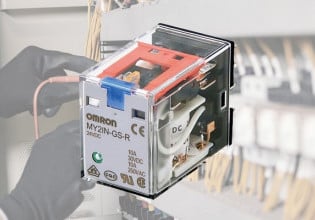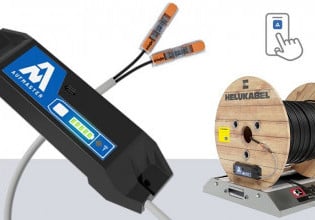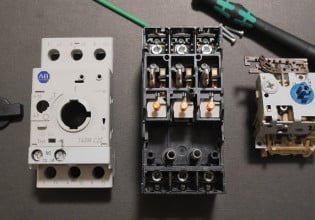Analog Output Module Wiring With 2, 3, and 4 Wire Devices
Analog outputs are a special signal with a wider current or voltage range, in contrast with a limited discrete on/off output. These signals are used to control or set parameters for other automation systems.
Make sure to check out our related article on analog input connections:
How To Use Analog Inputs With 2, 3, and 4 Wires

Figure 1. Analog outputs are found on many devices from PLCs, to motor drives, to PID controllers.
What Is an Analog Output?
An analog output is an output from a control system CPU that varies in current or voltage. This style of output was very common before fieldbus technology became popular and was typically used to control various devices such as variable frequency drives (VFDs) or servo drives. Analog outputs are still used today for controlling the same devices or for setting parameters in sensors. There are a few different types of analog outputs and ways of connecting devices downstream of an analog output. In this article, I outline some of the differences between the types of outputs and how to connect your analog output to the control system.
When dealing with inputs and outputs, the reference device is very important. A VFD will have analog inputs and analog outputs. The output from a VFD will go to the inputs of the PLC and vice versa for the input of the VFD. For the duration of this article, “output” will refer to the PLC outputs.
Figure 2. Allen-Bradley 1734-OE2C Point I/O Output Module. Image used courtesy of McNaughton-McKay
Types of Analog Output: Voltage and Current
When choosing an analog output, there are two types to consider, voltage or current. The voltage output will typically be 0-10 VDC or (-)10-(+)10 VDC and is quite common for parameter settings. Current outputs usually come in 4-20 mA but can also come in 0-20 mA. The deciding factor as to current or voltage will rely entirely on the device that will be reading this signal. If connecting to a VFD, check the manual for input terminals. It is not uncommon for a device to support both current and voltage inputs, but it might require the configuration of the device or the use of separate terminals.

Figure 3. I/O pin designation for a typical motor drive unit. Note the Ao0- and Ao0+ indicating the analog output. Image used courtesy of Rockwell Automation
Electrical Noise
Electrical noise is when high-frequency signals induce a voltage onto an analog signal. This can cause incorrect readings or errors on the analog device. There are many methods to counteract electrical noise. One common approach is to use shield cabling. This cabling has a special ground wire that helps drain the electrical noise to the ground. Some manufacturers will provide a designated terminal for the shield wire. If there isn't a terminal, use the chassis ground instead of 24 VDC ground.
Another common solution to the problem of signal noise is the use of common-mode canceling, meaning that both the (+) and (-) wires for each signal, either voltage or current, travel together in a bundle. If either wire is subjected to interference, the noise should be identical on the second wire as well. The true signal then is not the magnitude of the (+) signal, but the difference (subtraction) between both signal wires.
2-Wire, 3-Wire, 4-Wire
This refers to the number of wires the device will use and also how the device will connect to the PLC.
A 2-wire analog device will commonly be current analog and transmit power, signal, and ground on the same two wires. These devices are typically DC powered and used for parameter-setting signals. With only two wires and no additional power source, a limiting factor is the distance the device needs from the control system and the amount of power the device can consume.
The 2-wire configuration is also used when the receiving device is powered by an external supply, such as a motor controller receiving a speed reference signal, or a PID controller with an analog set point. The analog output will only contain 2 wires: the signal and the reference.
A 3-wire configuration will have one wire for the signal, a shared common wire, and a wire for power. With this configuration, the power is isolated so the device can receive power from the control system, thus allowing different voltage settings than the signal.
A 4-wire connection will have a connection for the power and ground, which the device will use to power itself, and a signal with its own reference common. This configuration gives the most flexibility. The device can be powered via AC or DC, and the signal wires are completely isolated. If the device requires a high-load AC, two cables may need to be run instead of one.
Wiring a Current Output Module
There are slight differences when connecting an analog current output device instead of a voltage device. There will likely be a difference between manufacturers or if the module is a remote or chassis. Always refer to the manufacturer's instructions for proper wiring techniques.
Current - Using the Allen-Bradley 1734-OE2C as an example, we can see from the diagram below that two channels can be wired in two different ways. The diagram shows a 2-wire connection to channel one and a 4-wire to channel zero. Both devices are wired using a shielded cable with the drain wire connected to terminals two and three.
The signal that varies in current is connected to terminals zero and one, with the common (reference signal) being connected to terminals four and five. Another example would be the Siemens analog output module 6ES7532-5HD00-0AB0. This particular module can be configured to output current or analog signals.
Below is the wiring diagram for the current output configuration. Channel 0 has its output signal on terminal one with the reference signal on terminal three, and there is no provided terminal for the drain wire.

Figure 4. 4-wire and 2-wire current outputs. Image used courtesy of Rockwell Automation

Figure 5. 2-wire analog output schematic. Image used courtesy of Siemens
Wiring an Analog Voltage Module
Voltage modules are wired similarly, only polarity will sometimes be indicated on the drawing. The Allen-Bradley module uses a 2-wire connection with the signal wire again connected to terminal zero and one. The Siemens example has a little more wiring when using the voltage configuration. The drawing below shows two configurations, a 2-wire connection without compensation for line resistance and a 4-wire with compensation for line resistance.

Figure 6. 2-wire voltage output connection without compensation for line resistance, which can create errors between the sent and received signal. Image used courtesy of Rockwell Automation

Figure 7. 2-wire (1) and 4-wire (2) connections on an analog output module. Image used courtesy of Siemens
Analog Output Connections
These are just some examples of how analog output devices can be connected to a PLC output module. As you can see from the diagrams above, each manufacturer will have its own way of connecting devices. Always refer to the manual of the output module to ensure devices are wired correctly to the output module.







